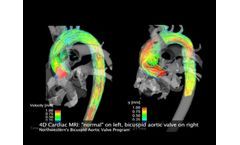Refine by
Multiple Sclerosis Articles & Analysis
35 articles found
Additionally, individualized cancer immunotherapy is paving the way for personalized treatment strategies, while research on immune acquisition and multiple sclerosis continues to evolve. This article explores these groundbreaking developments, highlighting their impact on modern medicine and patient outcomes. ...
Its unique structure, featuring multiple domains, allows it to interact with a wide array of other proteins and molecules. ...
It has been found that the development of myasthenia gravis (MG), multiple sclerosis (MS) and Guillain-Barré syndrome (GBS) is associated with abnormalities of Th17 and Treg cells and cytokines and transcription factors. ...
IL-17A also has a role in other inflammatory diseases. In patients with multiple sclerosis (MS), rheumatoid arthritis, and acute coronary syndrome, the increase in IL-17A concentration is associated with systemic inflammation parameters [3]. ...
These diseases include: Asthma Psoriasis Lupus Rheumatoid arthritis Multiple sclerosis ...
The use of Quantitative Susceptibility Mapping (QSM) is often viewed as incompatible with current standard radiology workflows. Some radiologists or departments may be unaware of its existence or purpose. Despite the skepticism surrounding its viability in a clinical setting, QSM shows great potential in a wide range of clinical applications, particularly for biomarker detection and ...
To understand the significance of the SpinTech MRI STAGE software platform, it helps to begin by asking a question: Given that MRI is an incredibly powerful diagnostic tool for neurological diseases like Alzheimer’s, dementia, Parkinson’s and multiple sclerosis (MS), why have radiologists and neurologists had to choose between conducting faster MRI ...
There are a ton of practical uses for computer vision at present times. One industry where this technology is increasingly useful in healthcare. It is impossible to exaggerate the value of computer vision services in the medical field. Its methods continue to be used more widely since they have demonstrated excellent utility in numerous medical contexts, including surgical planning and medical ...
It’s about regaining your freedom when you’re using a smartphone, tablet or computer. Amyotrophic lateral sclerosis (ALS): ALS affects nerve cells in the brain and spinal cord which causes loss of muscle control. Over time, muscles in the body becomes weaker, and problems with strength in the arms and legs arises while difficulty in in speaking and swallowing occur. ...
Also, Fjeldstad et al. [3]demonstrated that postural stability is compromised in multiple sclerosis (MS) patients, despite minimal clinical disability, with significant differences between the MS group and healthy controls in unilateral stance (right leg) with eyes open and closed. ...
S. [2] used this protocol to investigate balance control differences between multiple sclerosis (MS) patients and healthy individuals. They found that the MS group had smaller limits, showed on the endpoint and maximum excursion values. ...
In some demyelinating diseases, such as multiple sclerosis and white matter lesions, there are many OPCs in the lesion, but they cannot differentiate into mature oligodendrocytes, and our understanding of OPC differentiation to myelinate is still not deep enough, therefore, in-depth exploration of the factors of OPC differentiation is very important for the ...
Oncology and autoimmune diseases (rheumatoid arthritis, multiple sclerosis) are currently among the clinical pipeline indications for LAG-3 which acts as an immunomodulator in a variety of tumors, including leukemia, non-small cell lung cancer, colon cancer, pancreatic cancer, and head and neck cell cancer. ...
Recent studies now suggest a link between EBV, multiple sclerosis (MS), and some types of cancer. Protecting the Immunocompromised For people with compromised immune systems, such as the elderly, those with organ transplants, and people with HIV infection, the consequences of latent virus reactivation can be even more dire. ...
We have not yet implemented a defined protocol, and are still experimenting with the different modes and applications depending on the pathologies of our patients: multiple sclerosis, stroke, tetraplegia, paraplegia, Guillain-Barré, etc … For example, in a case of a MS, we can use it in hypertonic mode to decrease spasticity and related pain. ...
They were using CCM as a genetic model of vascular instability, because any insight into the pathophysiology of these “leaky” blood vessels could have meaningful implications for many other diseases like multiple sclerosis, inflammation and sepsis. They had already been part of the scientific community that identified mutations in the CCM1, CCM2 and ...
Neurological autoimmune diseases Secondary OCD can also occur in autoimmune encephalitis and is associated with central nervous system autoimmune diseases such as multiple sclerosis. Systemic autoimmune disorders can also cause OCD syndrome. ...
They are diseases that present many diagnostic and follow-up difficulties, have an unknown origin in most cases, entail multiple social problems, there are few epidemiological data, pose difficulties in research due scare cases, and they mostly lack effective treatments.. ...
They point out that inhibition of abnormal fibrin activity may hold promise for the prevention or treatment of periodontal disease, as well as other inflammatory diseases marked by fibrin accumulation, including arthritis and multiple sclerosis. The findings were published in Science, entitled "Fibrin is a critical regulator of neutrophil effector function at the ...
ByMatexcel
These reasons are given in order from the most to least common: Sleeping in a bad position Carpal tunnel syndrome Cubital tunnel syndrome Peripheral neuropathy (diabetes and alcohol abuse) Cervical Spondylosis Raynaud's disease Vascular diseases Stroke Multiple sclerosis Medication Side Effects (Chemotherapy) Vitamin B12 Deficiency Numb finger ...

















